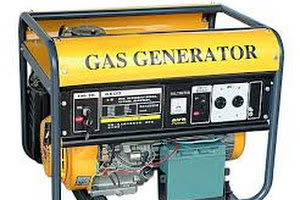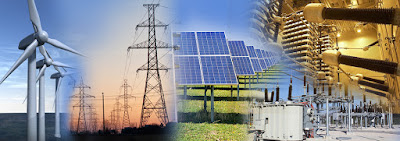Industrial Star Delta Starter for a 3-Phase
Induction Motor
Objectives of Star-Delta Technique Motor Starter are:
Reduce high starting current and along these lines forestall
motor from overheating
Provide over-burden and no-voltage assurance
 |
| 3- Phase Induction Motor |
Star Delta Starter:
In star delta starting, the motor is connected in STAR mode
throughout the starting period. When the motor reached the required speed, the
motor is connected in DELTA mode.
Star Delta Motor Control Power Circuit
Star Delta Motor Control Power Circuit
Components of a Star-Delta Starter:
Contractors: The Star- Delta starter circuit comprises of
three contractors: Main, star and delta contractors. The three contractors are
solicited to unite the motor winding first in star and afterward in delta.
Timer: The contactors are regulated by a timer incorporated
with the started.
By any chance if star and delta contactors are actuated at
the same time, the motor will be damaged.
Thermal overload relay: A thermal over-load relay is
likewise consolidated into star-delta control circuit to ensure the motor from
intemperate heat which might expedite motor finding fire or wearing out. In the
event that the temperature goes past a preset quality, the contact is open and
power supply is cut in this manner ensuring the motor.
Working of Star-Delta Starter:
At first the primary contractor and the star contactors are
shut. After a time interval the timer signs to the star contactor to head off
to the open position and the primary, delta contactors to head off to the shut
position, accordingly structuring delta circuit.
Hence, the line current drawn by the motor at starting is
decreased to one-third as contrasted with starting current with the windings
associated in delta. Likewise, since the torque advanced by an induction motor
is corresponding to the square of the applied voltage; star- delta starter
decreases the starting torque to one- third of that possible by immediate delta
starting.
The timer controls conversion from star connection to delta
connection. A timer in star delta starter for a 3-phase motor is intended to do
the move from star mode, utilizing which the motor runs on a decreased voltage
and current and produces less torque – to the delta mode indispensable for
running the motor at its full power, utilizing high voltage and current to
transform a high torque.
Terminal Connections in Star and Delta Configurations:
L1, L2 and L3 are the 3-phase line voltages, which are given
to primary contractor. The main motor coils are U, V and W is shown in figure.
In star mode of motor winding, the primary contractor associate the mains to
essential winding terminals U1, V1 and W1.the star contractor shorts the
auxiliary winding terminals U2, V2 and W2 as indicated in figure.
Notwithstanding when the primary contractor is shut supply arrives at terminals
A1, B1, C1 and consequently the motor winding are energized in star-mode.
The timer is initiated in the meantime moment when star
contactor is energized. After the timer achieves the specified time period, the
star contactor is de-energized and delta contactor is energized.
Induction motor winding terminals connected in star and
delta configuration
Induction Motor Winding Terminals Connected in Star and
Delta Configuration
The point when delta contractor closes, the motor winding
terminals U2, V2 and W2 get associated with V1, W1 and U1 individually through
the shut contacts of primary contractor. That is for delta association,
fulfilling end of one winding is to be joined with beginning end of the other
winding. The motor winding are reconfigured in delta by supplying line voltage
L1 to winding terminals W2 and U1, line voltage L2 to winding terminals U2 and
V1; and line voltage L3 to winding terminals V2 and W1, as indicated in figure.3- Phase Induction Motor most of uses to Industrial work.











